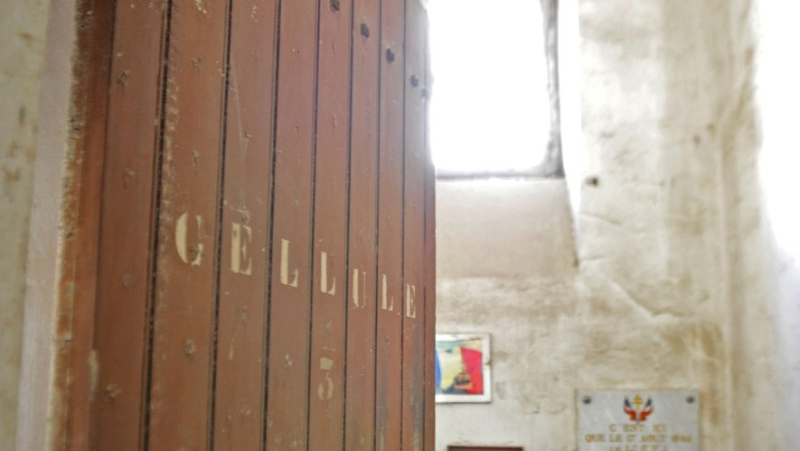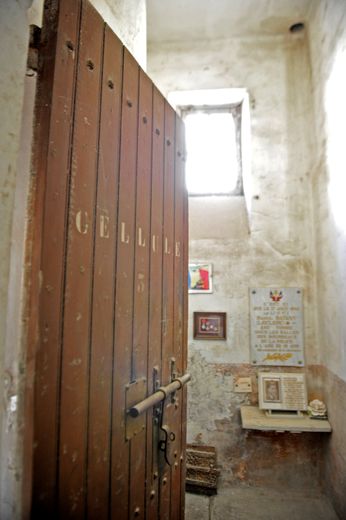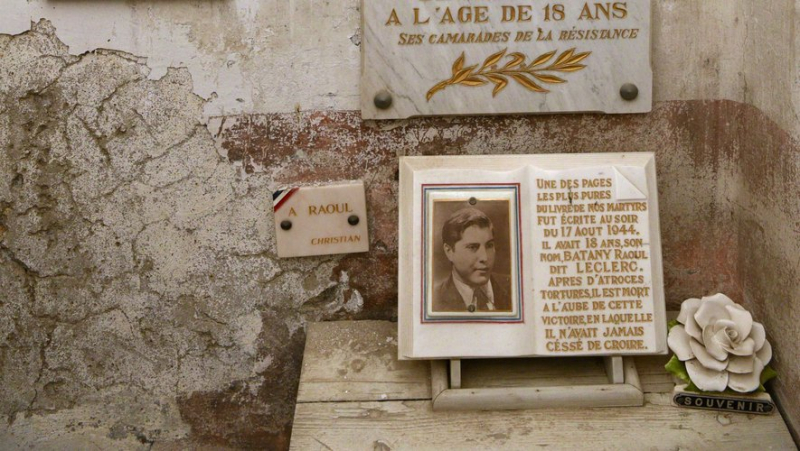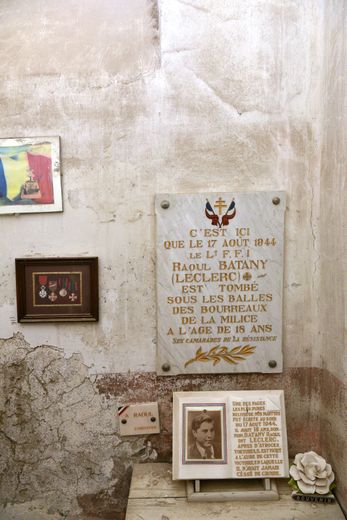Abandoned, the jails of the Martyrs of the Resistance in Montpellier almost disappeared


In these cells, the resistance fighters, incarcerated from June to August 1944, suffered martyrdom. DR – Montpellier City Hall


Plaque commémorative en hommage à Raoul Batany, décédé dans ces geôles, après avoir été torturé sauvagement par les miliciens. DR – Mairie de Montpellier
This place of remembrance, in the heart of the Beaux-Arts district in Montpellier, narrowly escaped disappearing due to its advanced state of deterioration. The action of the memorial associations has finally paid off.
The prayers addressed to God by the seminarians welcomed as part of their religious training, at the beginning of the construction of the site, in 1865, were succeeded, almost 80 years later, by the cries of the resistance fighters tortured by the militia, who made it their landmark in 1944.
A look back at the history of the jails of the Martyrs of the Resistance
Property of the diocese, the site became that of the City of Montpellier during the separation of Church and State in 1905. It then hosted a military hospital during the First World War, and also housed the 81st Infantry Regiment led by Captain Jean-Marc de Lauwe, whose military exploits earned the site the name Lauwe barracks.
Converted again into a military hospital during the Second World War until 1943, the premises were unoccupied after the departure of the Navy Health Service, before being reinvested by the Militia from June to August 1944, which turned it into a prison and a place of torture for the resistants.
The price of blood
In this building, well hidden in the vast premises of the barracks, "The French Militia committed unspeakable atrocities behind closed doors, worse than the Gestapo, whose premises were located right next door, at the Villa des Rosiers, which no longer exists today“, recalls Michèle Blanchot, president of the association Traces d'Histoire.
In the six cells of the prison, 94 resistance fighters were incarcerated, dispossessed of their valuables, their money, humiliated, beaten and subjected to terrible torture. Five of them, Enrique Pinol, his wife Élise, Germaine Bousquet, Jean Guizonnier and Raoul Batany, died under torture or by summary execution.
Despite the abuse inflicted on them to force them to give the names of their fellow resistance fighters, none of them ever spoke. From their incarceration, but above all from their heroism, remain inscriptions, such as "One can give more than one's life to one's country, one can give it one's honor", adorning the walls of the cells.< /p>
But these traces of their last words fade away in this vast site which has housed the Cité scolaire Françoise-Combes since 2010.
Duty of memory
It is for this reason that Michèle Blanchot and the departmental president of the National Union of Associations of Deportees and Internees of the Resistance and Families, William Garrivier, rang the bell. rsquo;alarm, after having obtained, in 2019, the registration of the site as a historic monument. "Saving and renovating these jails was imperative for us, because they are the only witness, in Montpellier, of this dark period of history. But the file remained blocked because, although owned by the Ministry of the Army from 1947, the place is today rented by National Education. In fact, it is difficult to know who is responsible for conducting the work and providing the funding“, relates William Garrivier.
The case dragged on until this memory transmitter threw a tantrum on August 27, 2023, during the ceremonies marking the 79th anniversary of the liberation of Montpellier.
A deliberation for their preservation
A salutary rant since the mayor of Montpellier, Michaël Delafosse, then committed to financing the renovation and maintenance of the jails of the Martyrs of the Resistance. A deliberation was voted to this effect during the municipal council of July 11, 2024 so that these resistance fighters who fought for our freedom are not forgotten.
The City of Montpellier is committed
"À Montpellier, we look our history in the face, even if our city has had its dark phase“, recalls Boris Bellanger, deputy mayor, delegate for historical heritage, during the municipal council of July 11, while mentioning the restoration and enhancement of the Lauwe geological sites. In view of the state of disrepair of this important place of memory, the City has engaged a dialogue with the state in order to be able to intervene to safeguard the site and enhance its value.
The first emergency being to safeguard the historical inscriptions which are deteriorating at lightning speed, work has just been launched. The next step will be the restoration of the caves, between 2024 and 2025, in order to allow the reception of the public, without risk of degradation of the site. Between the studies and the works, the cost is estimated at 232,000 euros. Although the terms of the opening to the public are still under discussion, “the idea is that the site will be accessible beyond the Heritage Days, and that it will be part of a memorial circuit“, specifies Sébastien Cote, deputy mayor, delegate to the commemorations.
I subscribe to read the rest




